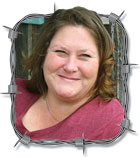 The weather app on my phone has been busy the last few weeks, and I’m disappointed in what it tells me.
The weather app on my phone has been busy the last few weeks, and I’m disappointed in what it tells me.
Just when I think it’s about to rain, the front moves in a different direction or disappears. With the spotted showers and storms we’ve been experiencing, your neighbor may have gotten an inch or more, but you – living a couple of miles away – didn’t get a single drop. One recent evening I could hear rain falling and I could smell that distinctive aroma, but it wasn’t raining where I was. We’ve gotten scattered showers at our place, but it’s not enough, so far, to make a difference.
Concerns regarding the weather are nothing new for farmers and ranchers, and I don’t think there has ever been a “perfect” spring, summer, winter or fall, but we can hope for favorable forecasts.
Twenty-five percent of cattle- and hay-producing areas in the nation – including the Ozarks region – are in a drought, and it’s expected to continue through September, according to the U.S. Drought Monitor.
People are worried about having enough pasture to finish the summer and fall, and enough hay to get through the winter. Some of our neighbors are starting to feed a little hay because their pastures are brown from the prolonged drought. There’s a lot of talk and worry circulating about people trying to gouge hay prices in the wake of this prolonged dry weather as well.
Some producers are selling animals to have fewer mouths to feed this fall and winter, prompting predictions of a downward spiral in markets. A friend recently sold a sizable group of high-quality heifers because they weren’t going to be able to keep them and feed their current cowherd this winter. It was tough, but they felt it was the best move for their farm and family.
Livestock producers aren’t the only ones feeling the heat. Row crop farmers are watching their crops die, along with their hopes for a good harvest; many won’t see a harvest at all. A lack of grain to feed livestock, and to produce other items, brings predictions of high grain prices in the future.
Other parts of the country are also feeling the pinch from a drought, or are dealing with golf-ball sized hailstones, too much rain, high winds, tornadoes and everything in between, so the Ozarks isn’t alone in its plight with nature. In the Ozarks, we’ve also had to deal with these other weather-related issues and many farmers in the area have reported damage from storms. While everyone is thankful for the rain, the high winds that can come along were unwelcome.
Will Rogers said, “The farmer has to be an optimist or he wouldn’t still be a farmer.” Will 2018 be the year farmers and ranchers become pessimists and wait for the other shoe to drop, or will we continue to persevere, despite the doom and gloom? I see folks in the Ozarks taking the latter approach.
Some of the toughest, hardest working and most stubborn people one will ever find are here in the Ozarks so a little hot air, high humidity and little rain will not keep them down.
Farming and ranching in hard times is nothing new, and as long as there’s someone raising livestock or planting a crop, the weather will be a factor, and we will always be at the mercy of Mother Nature and her moods. I just hope she gets a little friendlier attitude in the coming weeks.
Julie
Julie Turner-Crawford is a native of Dallas County, Mo., where she grew up on her family’s farm. She is a graduate of Missouri State University. To contact Julie, call 1-866-532-1960 or by email at [email protected].






